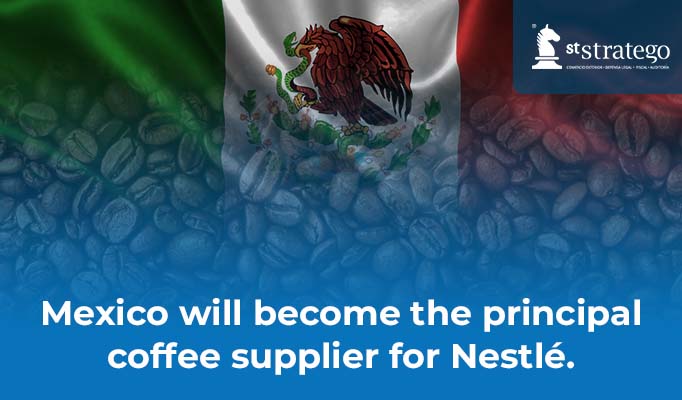Just over three and a half years ago, the future of Nestlé’s new major project was in discussion: a Nescafé soluble coffee processing plant that would expand its installed global production capacity.
Nestlé contemplated two possible locations: Mexico and Brazil. The decision ruled in favor of our country, so the factory settled in Santa Rita, Veracruz; with an initial investment of $154 million in the first stage, which reached $340 million through the second injection of capital during the pandemic, which constituted a historical figure for the company.
It will generate 1,200 job opportunities and 12,000 indirect jobs, which will primarily benefit the population of the state since 90% of the workforce is from Veracruz.
Finally, the plant was inaugurated on July 16 with the presence of President Andrés Manuel López Obrador. At the event, the Executive President of Nestlé Mexico, Fausto Costa, assured that the company will invest 50% more in this six-year term than in the previous ones.
It will produce an additional 40,000 tons of green coffee per year of the Robusta and Arabica varieties, making Mexico the principal producer of coffee for Nestlé, ahead of Brazil and Vietnam, the two biggest coffee producers in the world.
In addition, it’s contemplated that these come mainly from the national field. It’s projected that the purchase of coffee from Mexican farmers will increase by 50% in the next three years.
This Nestlé factory is the eighteenth in the country. It is the company’s most modern and sustainable, and one of the most technologically advanced in the world; it will use last-generation equipment and green energies to reduce the environmental impact, such as a biomass boiler and 100% water recirculation systems.
At the inauguration, President López Obrador emphasized that this plant and the other Nestlé factories symbolize support for nearly 100,000 producers.
Since his administration, the Sembrando Vida program has been implemented, whose purpose is to rescue the agri-sector, regenerate the social fabric and reactivate the economy. It currently has 420,256 beneficiaries from 20 states in the country who receive monthly support.
Nestlé has been operating in our country for more than 90 years. Fausto Costa said that the company invests in Mexico because it has potential and many commercial advantages.
Also, at the time of announcing the investment, the company had the intention to double exports of products made in Mexico. At that moment, Nestlé managed a volume of $200 million per year, but now it is $600 million, destined for more than 66 countries.
According to FAO statistics, in 2020, Mexico ranked as the 12th coffee producer globally, contributing 1.6% of the total tons produced by exporting countries.
In that year, green coffee was Mexico’s 21st most exported agri-food product, with an amount of $419 million, ranking 5th in the world with 7.1% of global exports. The principal destinations for the product were the United States, Germany, and Belgium
By 2021, coffee production amounted to more than 947,092 tons, with a value of 5,210.6 million pesos. Although its production and exports decreased between 2020 and 2021, it’s expected that both will increase significantly by 2022.
According to SADER’s Agrifood Expectations 2022, production will increase 5%, led by the four states that grow almost 90% of the country’s coffee: Chiapas, Veracruz, Puebla, and Oaxaca.
This document does not constitute a particular consultation, and therefore, Asesores Stratego SC, is not responsible for the interpretation or application given to it. The total or partial reproduction of this publication, by any means or procedure, is prohibited without the prior, express and written authorization of the author. Any form of unauthorized use will be prosecuted in accordance with the provisions of the Federal Copyright Law. We are at your service to answer your questions or comments, for more information on this subject and our services, please contact us at: info@asesores-stratego.com
or application given to it. The total or partial reproduction of this publication, by any means or procedure, is prohibited without the prior, express and written authorization of the author. Any form of unauthorized use will be prosecuted in accordance with the provisions of the Federal Copyright Law. We are at your service to answer your questions or comments, for more information on this subject and our services, please contact us at: info@asesores-stratego.com




